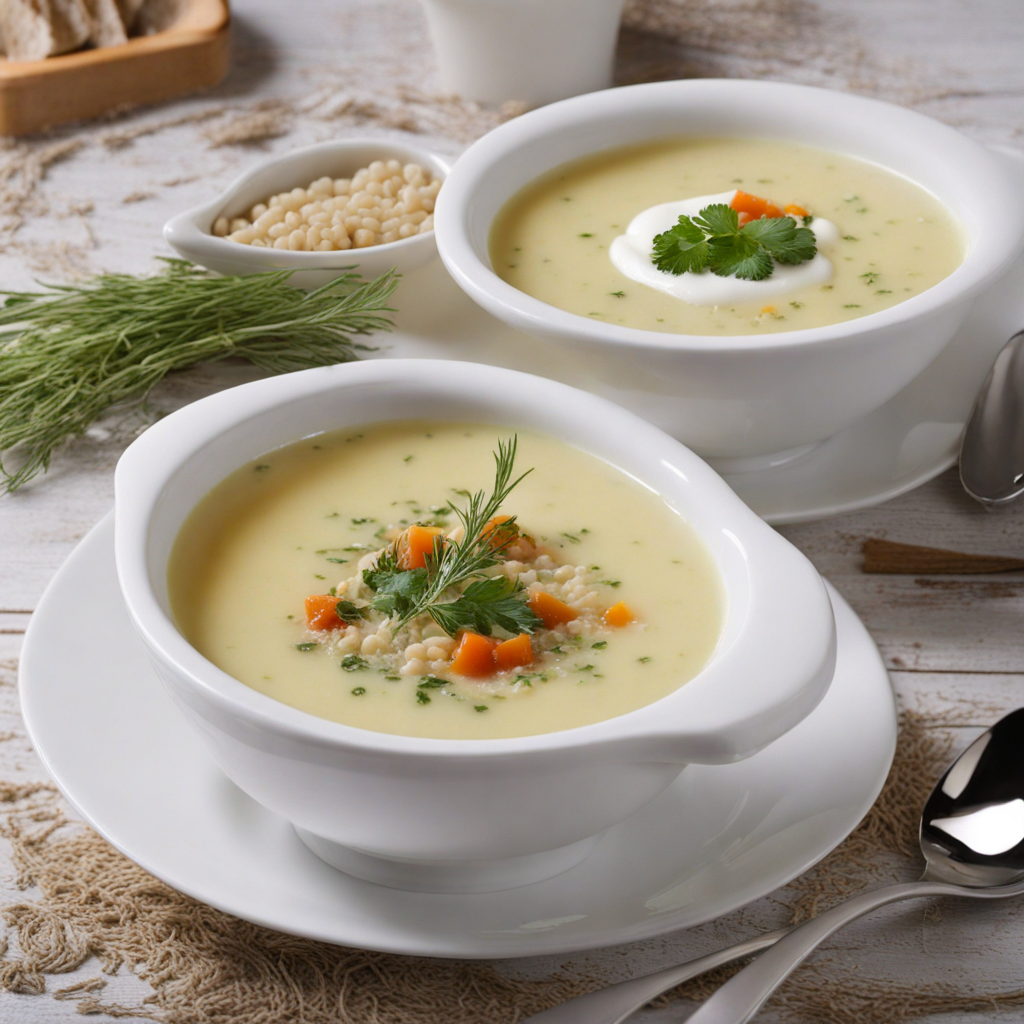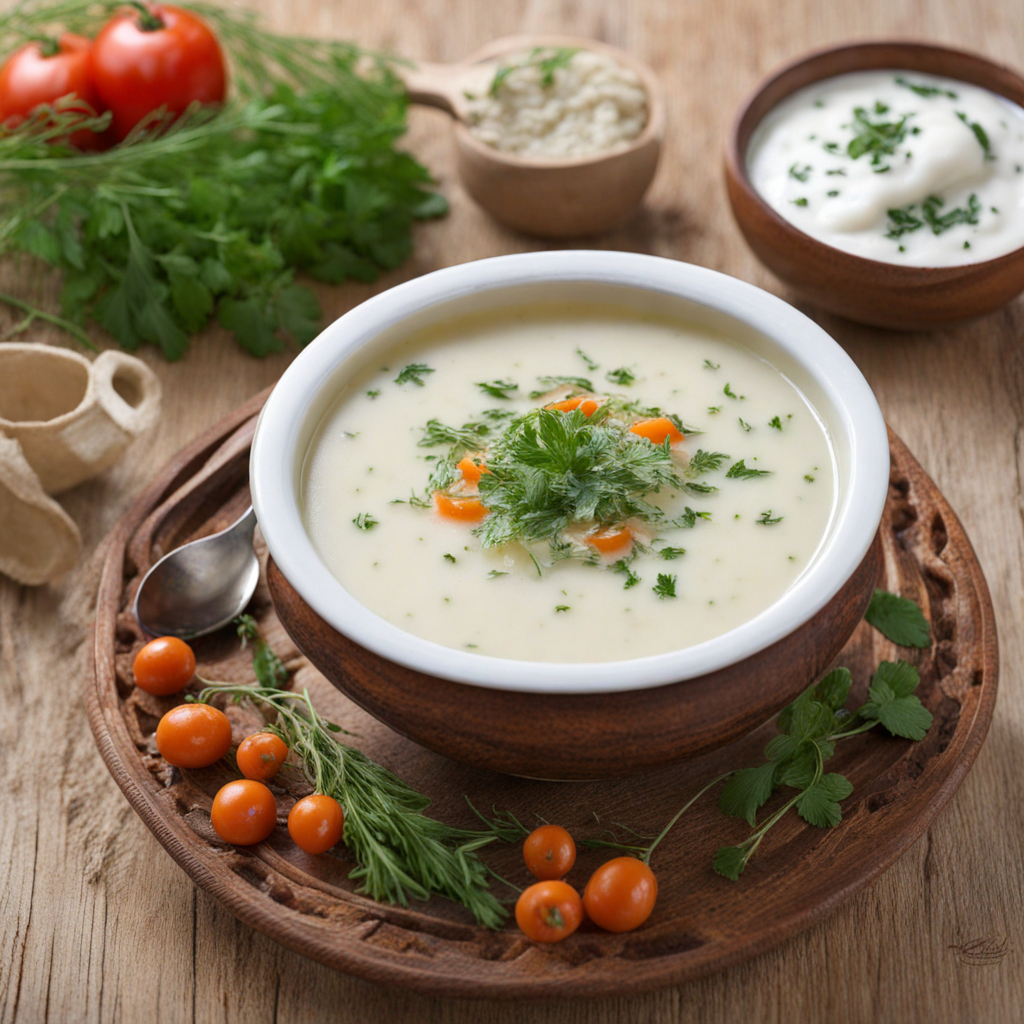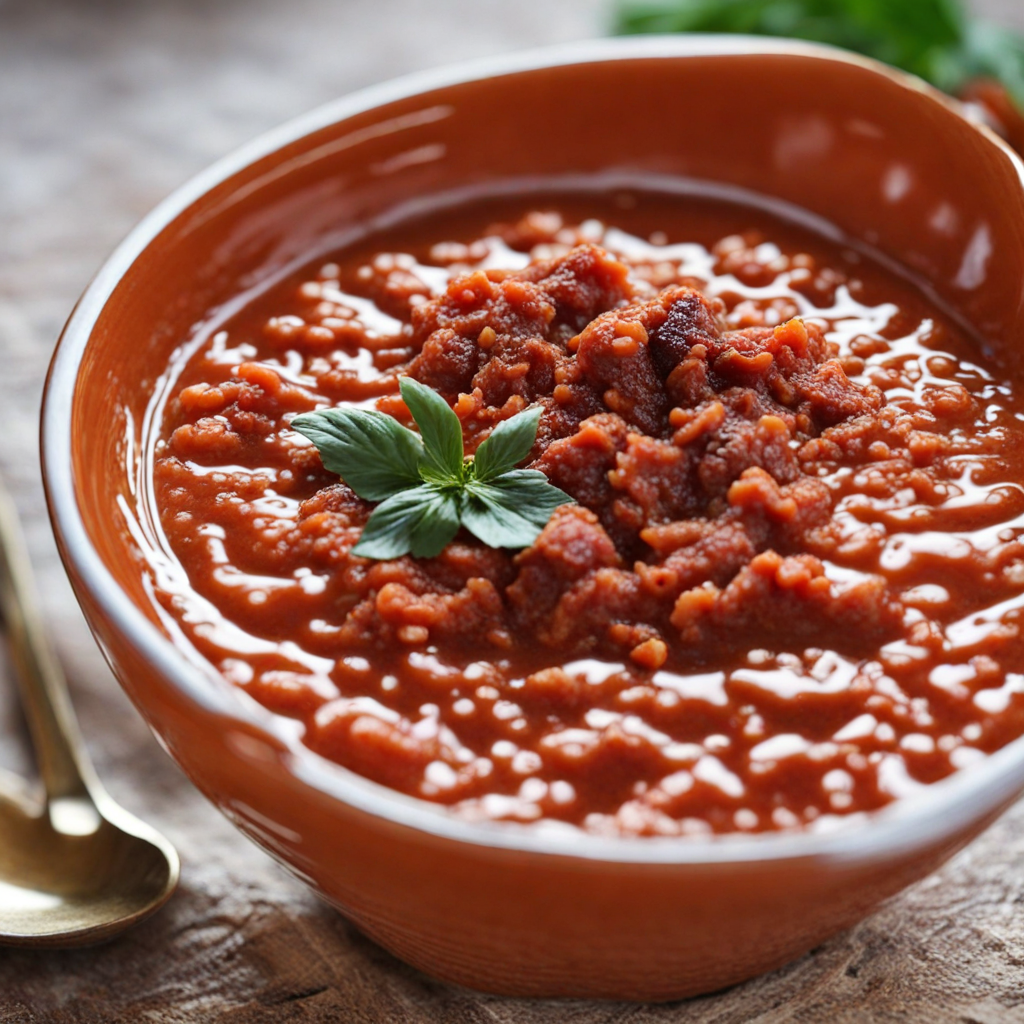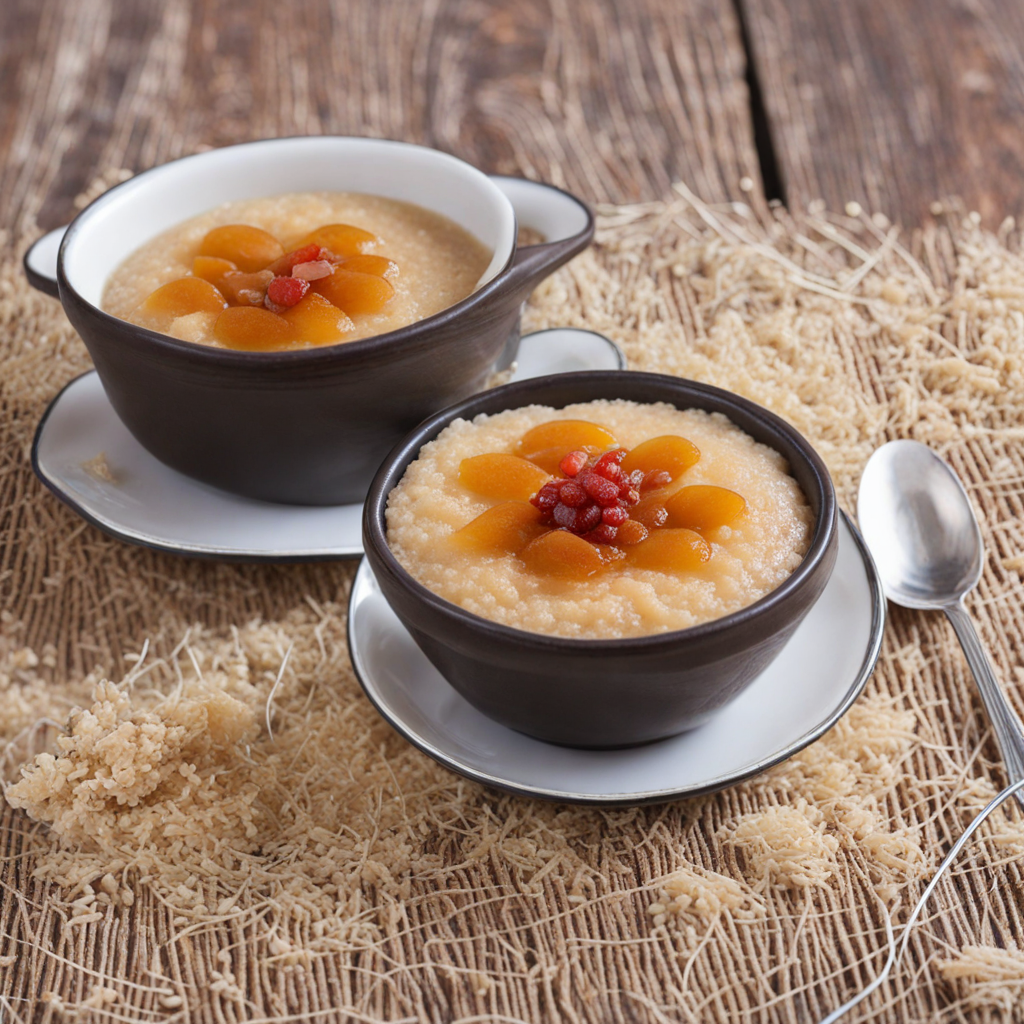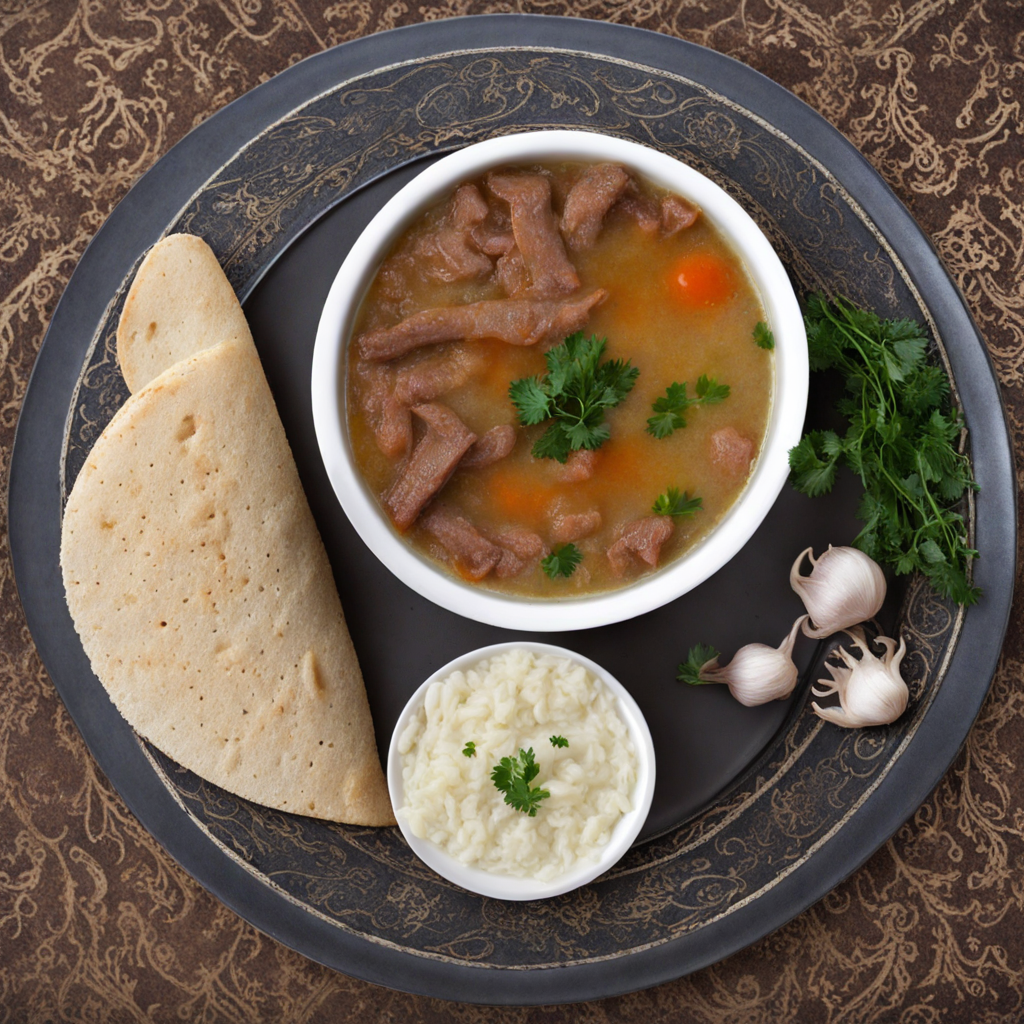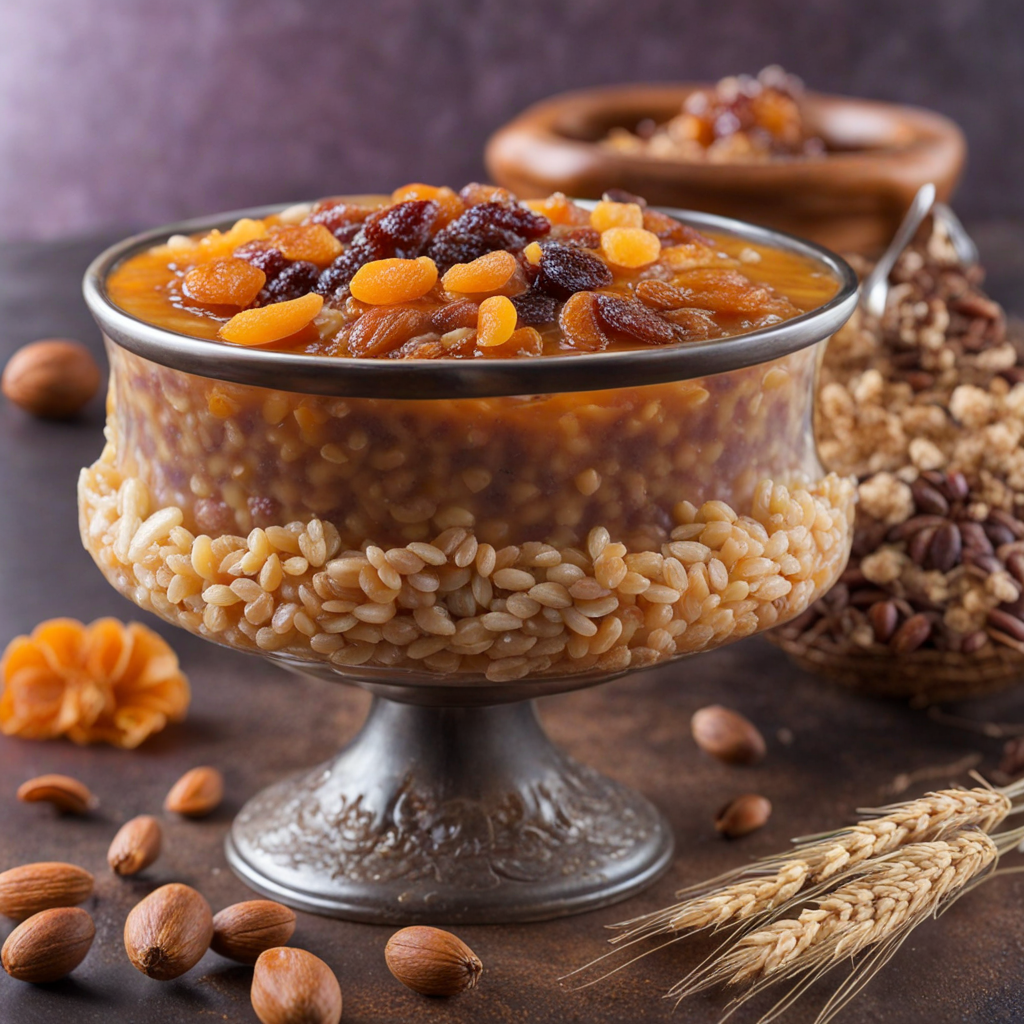Spas
Spas is a traditional Armenian dish that captivates the palate with its unique combination of tanginess and creaminess. This delightful soup is primarily made from yogurt and is often enriched with rice or bulgur wheat, creating a comforting and hearty meal. The yogurt is usually fermented, which adds a slight tang that perfectly balances the flavors. As it simmers, the rice absorbs the yogurt's richness, while herbs like dill or mint infuse the dish with fragrant notes, making each spoonful a refreshing experience. The preparation of Spas is an art in itself, with variations that highlight the regional diversity of Armenian cuisine. Some recipes incorporate vegetables such as carrots or potatoes, adding depth and texture to the soup. A drizzle of olive oil or a sprinkle of toasted nuts can elevate the dish, providing a delightful contrast to the creamy base. The final touch often comes from a sprinkle of fresh herbs, enhancing both the flavor and visual appeal of this beloved dish. Spas is not just a meal; it's a cultural experience that embodies the warmth of Armenian hospitality. It is often served during special occasions or family gatherings, bringing loved ones together over a steaming bowl of this nourishing soup. Enjoying Spas is an invitation to explore the rich culinary traditions of Armenia, where every bite tells a story of history, community, and the joy of sharing food.
How It Became This Dish
Origin of Սպաս The dish known as *Սպաս* (Spas) has its roots deeply embedded in Armenian culinary traditions, reflecting the agricultural practices and social customs of the region. Historically, Spas is a type of yogurt soup, typically made with bulgur, rice, or lentils, and is flavored with herbs such as dill or mint. The name "Spas" is derived from the Armenian word for "to save," which resonates with the dish's role in Armenian households as a nourishing meal that could be prepared quickly and easily, especially during the long winters. Evidence of yogurt's prominence in Armenian cuisine dates back to ancient times, as the region has a long-standing tradition of dairy farming. The domestication of cattle in the Armenian Highlands facilitated the production of yogurt, which became a staple food due to its nutritional value and ability to be stored for long periods. Spas is believed to have originated as a means of utilizing leftover yogurt and grains, transforming them into a hearty dish that could sustain families during challenging times. Cultural Significance Spas holds a special place in Armenian culture, often associated with family gatherings and communal meals. It is commonly served during festive occasions, such as weddings and religious celebrations, symbolizing hospitality and abundance. The preparation of Spas can be a communal activity, bringing together family members who share the task of cooking and serving, thus reinforcing social bonds. In Armenian culture, traditional foods like Spas are also linked to spirituality and rituals. It is often prepared during Lent and other fasting periods, where it serves as a wholesome meal that aligns with dietary restrictions. The dish embodies the concept of "food as sustenance for the soul," fulfilling both physical and spiritual needs. This connection to spirituality is reflected in the way Spas is offered to guests, as a gesture of goodwill and a blessing for health and prosperity. Ingredients and Preparation The basic ingredients of Spas are simple yet nutritious, showcasing the Armenian emphasis on wholesome, natural foods. The primary component is yogurt, usually homemade and rich in probiotics, which contributes to the dish’s health benefits. The choice of grains varies; bulgur and rice are commonly used, but some recipes may include lentils or even chickpeas. Fresh herbs, particularly dill and mint, play a crucial role in providing flavor and aroma, elevating the dish beyond mere sustenance to a culinary delight. The preparation of Spas often begins with cooking the grains until tender, followed by mixing in the yogurt and herbs. Some variations include the addition of sautéed onions or garlic for extra depth of flavor. The dish is typically served warm or at room temperature, garnished with additional herbs or a drizzle of olive oil. In more contemporary settings, Spas may be accompanied by a variety of pickles or flatbreads, enhancing the overall dining experience. Regional Variations As with many traditional dishes, regional variations of Spas exist, influenced by local ingredients and culinary practices. In the mountainous regions of Armenia, Spas might be heartier, incorporating more legumes and perhaps even meat for added richness. Conversely, in urban areas, the dish may be lighter, focusing on fresh herbs and yogurt, reflecting a modern twist on the classic recipe. In some regions, Spas is also prepared with the addition of seasonal vegetables, such as spinach or chard, which not only enhance the nutritional profile but also add vibrant colors to the dish. The adaptability of Spas is a testament to its enduring popularity, as families personalize the recipe to suit their tastes and available ingredients. Historical Development Historically, Spas has evolved alongside the Armenian people, mirroring changes in agricultural practices, trade, and migration. During the Armenian Genocide in the early 20th century, many families were uprooted and displaced, leading to the loss and adaptation of traditional recipes. Yet, Spas remained a comforting constant for those who sought to preserve their culinary heritage. In the diaspora, particularly in countries such as the United States, France, and Russia, Armenian immigrants have continued to prepare Spas, often using local ingredients and adapting the recipe to fit their new environments. This has led to a fusion of flavors and techniques, enriching the dish while maintaining its core identity. The enduring nature of Spas speaks to its importance as a cultural touchstone, providing a sense of belonging and continuity for Armenians around the world. Contemporary Relevance Today, Spas is experiencing a renaissance as chefs and home cooks alike embrace traditional Armenian cuisine. The increasing awareness of the health benefits of fermented foods has also contributed to its popularity. Yogurt-based dishes are celebrated for their probiotic properties, and Spas is no exception; it is often touted as a healthy option that supports gut health. Moreover, with the rise of farm-to-table movements, many are returning to the roots of culinary traditions, emphasizing the use of fresh, local ingredients. Spas fits perfectly into this ethos, as it can be easily customized based on seasonal produce and available grains. Food festivals and cultural events often feature Spas, allowing younger generations to learn about their heritage while enjoying a dish steeped in history. Conclusion In summary, Spas is more than just a dish; it is a representation of Armenian identity, resilience, and community. Its rich history reflects the agricultural roots of the Armenian people and the importance of food in cultural and social practices. As Spas continues to adapt and thrive in contemporary contexts, it remains a beloved staple that connects generations, offering a taste of Armenia's past while nourishing the future.
You may like
Discover local flavors from Armenia


